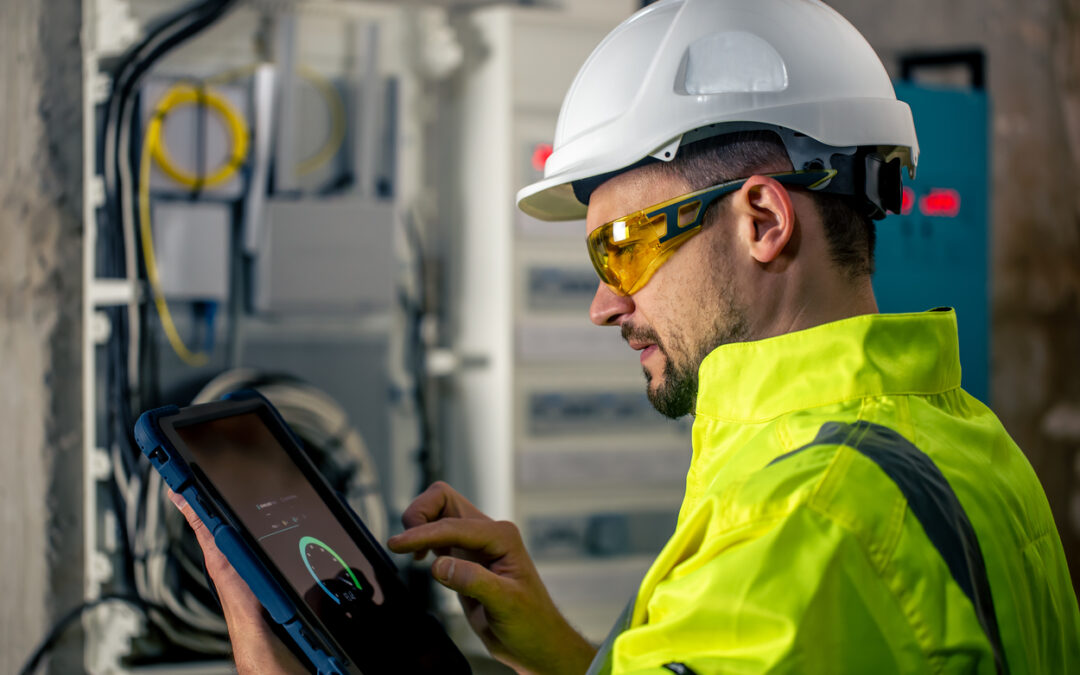
by mark advisor | Jun 25, 2025 | Blog
In today’s fast-paced world, the need for efficient and reliable systems is more significant than ever. Many industries are turning to predictive maintenance to keep their systems running smoothly, and heating elements are no exception. Predictive maintenance for heating elements is a proactive approach that helps businesses avoid expensive repairs and downtime.
Why Predictive Maintenance Matters
Heating elements are crucial components in a variety of applications, from industrial machinery to household appliances. Ensuring they function optimally is essential for both safety and efficiency. Predictive maintenance provides the tools to monitor the health of these elements continuously.
The Benefits of Predictive Maintenance
Implementing a predictive maintenance strategy for heating elements offers several advantages:
- Cost Efficiency: By predicting failures before they occur, businesses can save on costly repairs and replacements.
- Enhanced Safety: Early detection of potential issues reduces the risk of accidents and malfunctions.
- Extended Lifespan: Regular maintenance based on predictive insights can extend the life of heating elements.
Components of a Predictive Maintenance System
A robust predictive maintenance system for heating elements includes several key components:
Sensors and Data Collection
Sensors play a vital role in collecting data related to the performance of heating elements. These sensors monitor variables such as temperature, pressure, and electrical resistance.
Data Analysis and Diagnostics
Once data is collected, advanced analytics tools process it to identify patterns and anomalies. This step is crucial for predicting potential failures.
Implementing Predictive Maintenance in Your Organization
Adopting predictive maintenance for heating elements involves several steps:
1. Assess Your Needs
Evaluate the specific requirements of your heating systems and identify the most critical components that would benefit from predictive maintenance.
2. Choose the Right Technology
Select sensors and software solutions that align with your maintenance goals. Consider factors such as compatibility and scalability.
3. Train Your Team
Provide training for your maintenance staff to ensure they understand how to use the new technology effectively.
4. Continuous Monitoring
Implement a system for continuous monitoring and data collection to ensure the ongoing health of your heating elements.
Challenges and Considerations
While predictive maintenance offers numerous benefits, it also comes with challenges:
Data Management
Handling large volumes of data can be complex. It’s essential to have a reliable system for storing and analyzing this information.
Integration with Existing Systems
Integrating predictive maintenance solutions with existing systems may require additional resources and planning.
Cost and ROI
Initial investment costs can be high, but the long-term savings and increased efficiency often justify the expense.
Future of Predictive Maintenance for Heating Elements
The future of predictive maintenance looks promising, with advancements in technology and data analytics paving the way for more efficient and reliable systems.
AI and Machine Learning
Artificial intelligence and machine learning will play a significant role in enhancing predictive maintenance capabilities. These technologies can improve accuracy and provide deeper insights into system performance.
IoT Integration
The Internet of Things (IoT) enables the seamless integration of devices and systems, making it easier to implement predictive maintenance solutions.
Conclusion
Predictive maintenance for heating elements is a forward-thinking approach that offers numerous benefits, from cost savings to enhanced safety. By leveraging technology and data insights, businesses can ensure the efficiency and reliability of their heating systems.
For more detailed insights into predictive maintenance methodologies, consider exploring this insightful article on predictive maintenance using AI.
FAQs
What is predictive maintenance for heating elements?
Predictive maintenance uses data analysis and monitoring to predict when heating elements will fail, allowing for proactive repairs and maintenance.
How does predictive maintenance benefit businesses?
It reduces maintenance costs, minimizes downtime, and enhances the safety and reliability of heating systems.
What technologies are used in predictive maintenance?
Technologies such as sensors, IoT, AI, and machine learning are commonly used in predictive maintenance systems.
This article contains affiliate links. We may earn a commission at no extra cost to you.

by mark advisor | Jun 23, 2025 | Blog
In today’s rapidly evolving world of technology, the concept of a smart home is becoming more mainstream. As homeowners increasingly adopt smart technologies, understanding the nuances of preventive vs predictive maintenance in a smart home setting is crucial. These two maintenance strategies are paving the way for a more efficient and hassle-free living experience.
For those unfamiliar, the distinction between preventive and predictive maintenance is important, especially when it comes to smart home applications. This article will shed light on both strategies, helping you to make informed decisions about maintaining your smart home.
Understanding Preventive Maintenance in Smart Homes
Preventive maintenance involves scheduled checks and servicing to prevent potential issues in your home’s systems and devices. This proactive approach ensures that everything runs smoothly, reducing the chances of unexpected failures.
Benefits of Preventive Maintenance
Implementing preventive maintenance in your smart home can lead to numerous benefits:
- Cost Savings: Regular maintenance can help avoid costly repairs in the future.
- Extended Lifespan: Proper care can extend the life of your devices.
- Enhanced Performance: Regularly maintained devices work more efficiently.
Exploring Predictive Maintenance for Smart Homes
Predictive maintenance, on the other hand, uses data and analytics to predict when a device might fail. This approach leverages the power of IoT and AI, allowing homeowners to address issues before they occur.
Advantages of Predictive Maintenance
Adopting a predictive maintenance strategy offers several advantages:
- Reduced Downtime: By predicting failures, you minimize downtime.
- Improved Efficiency: Devices operate at optimal levels.
- Data-Driven Decisions: Use data to make informed maintenance decisions.
Comparing Preventive and Predictive Maintenance
Both preventive and predictive maintenance have their unique advantages. The choice between them often depends on your home’s specific needs and your personal preferences.
Cost Implications
While preventive maintenance can be less costly upfront, predictive maintenance might save more in the long run by preventing significant breakdowns.
Technology Integration
Predictive maintenance often requires a higher level of technology integration, which might be daunting for some homeowners but offers greater rewards in terms of efficiency and foresight.
The Role of IoT in Smart Home Maintenance
The Internet of Things (IoT) plays a pivotal role in both preventive and predictive maintenance. By connecting devices and enabling communication between them, IoT enhances the overall maintenance process. For an insightful read on how IoT is transforming maintenance, visit IoT Now.
Smart Devices and Sensors
Smart devices equipped with sensors can monitor their own performance and alert homeowners of any irregularities, facilitating both preventive and predictive maintenance.
Data Collection and Analysis
Data collected from smart devices can be analyzed to predict potential failures, allowing for timely interventions.
Implementing a Maintenance Strategy for Your Smart Home
Choosing between preventive and predictive maintenance involves evaluating your home’s unique needs and your comfort with technology.
Assessing Your Home’s Needs
Consider the age, type, and usage of your smart devices when deciding on a maintenance strategy.
Integrating Technology
For those looking to embrace predictive maintenance, integrating IoT devices and AI systems can significantly enhance your home’s maintenance strategy. Explore how AI can detect issues before they become costly through this AI Detection Guide.
Challenges and Considerations
While both maintenance strategies offer benefits, they also come with challenges that homeowners need to consider.
Cost and Resources
The initial setup for predictive maintenance might require more investment in terms of technology and resources.
Learning Curve
Adopting new technologies can have a learning curve, requiring time and effort to master.
Future Trends in Smart Home Maintenance
The future of smart home maintenance looks promising, with continuous advancements in technology making it easier and more efficient.
AI and Machine Learning
AI and machine learning are set to play a more significant role, enhancing the capabilities of predictive maintenance. Discover more about smart maintenance systems in this Smart Maintenance Systems Guide.
Increased Automation
Automation will further streamline maintenance tasks, making them more efficient and less burdensome for homeowners.
Conclusion
Understanding the difference between preventive and predictive maintenance is crucial for any smart homeowner. By carefully considering your options and embracing the right technologies, you can ensure a seamless and efficient maintenance process for your smart home.
FAQs
What is the main difference between preventive and predictive maintenance?
The main difference lies in approach: Preventive maintenance is scheduled and routine, while predictive maintenance relies on data to predict and prevent failures.
Which maintenance strategy is more cost-effective?
While preventive maintenance can be less expensive initially, predictive maintenance might save more money by avoiding major repairs.
How does IoT enhance smart home maintenance?
IoT enhances maintenance by connecting devices, enabling them to communicate, and providing data for predictive maintenance. Learn more about peace of mind through home monitoring here.
This article contains affiliate links. We may earn a commission at no extra cost to you.

by mark advisor | Jun 22, 2025 | Blog
In today’s rapidly evolving technological landscape, the use of predictive algorithms for leak prevention is increasingly becoming a game-changer across various industries. As businesses strive for efficiency and cost-effectiveness, these predictive algorithms offer a sophisticated means of anticipating and preventing leaks before they occur, saving both time and resources.
Understanding the mechanics of predictive algorithms and their application in leak prevention is crucial. These algorithms analyze data patterns to forecast potential leaks, allowing for timely interventions. By integrating such cutting-edge technologies, companies can not only enhance operational efficiency but also significantly reduce the risks associated with leaks.
The Importance of Predictive Algorithms in Modern Industry
Predictive algorithms have become an indispensable tool in the modern industry. They offer a proactive approach to maintenance and problem-solving, which is vital for industries where leaks can lead to substantial losses. By utilizing data-driven insights, businesses can make informed decisions and prioritize resource allocation effectively.
How Predictive Algorithms Work
At the core of predictive algorithms is data analysis. These systems collect and scrutinize vast amounts of data from various sensors and hardware systems. By identifying patterns and anomalies, the algorithms can predict the likelihood of a leak, allowing for preemptive measures to be taken.
Industries Benefiting from Leak Prevention
Numerous industries benefit from implementing predictive algorithms for leak prevention. The oil and gas industry, for instance, can prevent costly spills and environmental damage. Similarly, the water management sector can optimize resource usage and minimize wastage, ensuring sustainable practices are upheld.
Case Studies: Successful Implementations
Several companies have successfully integrated predictive algorithms into their operations. One notable example is a major oil company that reduced its leak-related incidents by 30% within the first year of implementation. This success underscores the potential of predictive technologies to transform industry standards.
Challenges and Considerations
While the benefits are clear, there are challenges to consider when adopting predictive algorithms. These include the initial cost of implementation, the need for skilled personnel to manage systems, and the importance of ongoing system maintenance to ensure accuracy and reliability.
Future Trends in Predictive Maintenance
The future of predictive maintenance looks promising, with advancements in artificial intelligence and machine learning driving further innovation. As these technologies evolve, we can expect even more precise and efficient algorithms that offer unparalleled insights into leak prevention and maintenance strategies.
Integrating Predictive Algorithms in Small Businesses
Small businesses can also benefit from these technologies. By adopting scaled-down versions of predictive systems, they can improve their operational efficiency and reduce costs associated with leaks. This democratization of technology enables businesses of all sizes to leverage advanced tools for better outcomes.
Real-World Applications and Success Stories
Real-world applications of predictive algorithms are vast and varied. From smart homes that utilize predictive maintenance alerts to industrial applications that safeguard critical infrastructure, the impact of these technologies is profound. For more insights, you can visit predictive analytics for home repairs which explores predictive applications in home maintenance.
The Role of IoT in Predictive Leak Prevention
The Internet of Things (IoT) plays a crucial role in enhancing predictive leak prevention. IoT devices provide real-time data that feed into predictive algorithms, offering a comprehensive view of system performance and potential vulnerabilities.
Enhancing Safety and Efficiency
By preventing leaks, predictive algorithms greatly enhance safety and operational efficiency. They minimize the risk of accidents, protect the environment, and ensure that resources are used optimally. This results in a safer working environment and contributes to a company’s sustainability goals.
Economic Benefits of Predictive Leak Prevention
The economic benefits of predictive leak prevention are significant. By reducing downtime and maintenance costs, businesses can achieve substantial savings. Furthermore, the ability to prevent leaks helps maintain product quality and customer trust, which are vital for long-term success.
FAQs
What are predictive algorithms?
Predictive algorithms are data-driven systems that analyze patterns and trends to forecast future events, such as potential leaks.
How do predictive algorithms prevent leaks?
These algorithms use data from sensors to identify anomalies, enabling proactive maintenance and preventing leaks before they occur.
What industries use predictive leak prevention?
Industries such as oil and gas, water management, and manufacturing commonly use predictive algorithms to prevent leaks and optimize operations.
For further reading on the benefits of predictive maintenance, check out this detailed guide on predictive maintenance strategies.
This article contains affiliate links. We may earn a commission at no extra cost to you.

by mark advisor | Jun 22, 2025 | Blog
In today’s fast-paced world, the integration of technology into our daily lives has become a norm. Among the various technological advancements, smart home health monitoring systems are gaining significant attention. These systems are revolutionizing the way we manage our health from the comfort of our homes. As we delve into the world of smart home health monitoring, we’ll explore its benefits, features, and future potential.
The Rise of Smart Home Health Monitoring
The concept of smart home health monitoring systems is not just a futuristic idea but a present-day reality. These systems are designed to monitor various health parameters, ensuring that individuals receive timely health insights. With the integration of artificial intelligence and IoT, these systems are becoming more efficient and reliable.
How Do Smart Home Health Monitoring Systems Work?
At the core of smart home health monitoring systems are sensors and devices that collect data related to an individual’s health. This data is then processed and analyzed to provide insights and alerts. For instance, heart rate monitors, sleep trackers, and glucose meters are some of the devices commonly used in these systems.
Key Features of Smart Home Health Monitoring Systems
Real-time Data Collection
These systems continuously collect data, ensuring that any anomalies in health parameters are detected early. This feature is crucial for conditions that require constant monitoring, such as diabetes or hypertension.
Integration with Other Smart Devices
One of the standout features of these systems is their ability to integrate with other smart home devices. This integration provides a holistic view of an individual’s health and lifestyle, allowing for more personalized health recommendations.
User-friendly Interface
Despite the complex technology behind these systems, they are designed to be user-friendly. Users can easily access their health data through smartphones or tablets, making health monitoring accessible to everyone.
Benefits of Smart Home Health Monitoring Systems
Proactive Health Management
With real-time data and alerts, individuals can take proactive steps towards managing their health. This proactive approach can prevent the onset of severe health conditions.
Enhanced Accessibility
These systems make health monitoring accessible to people who may not have easy access to healthcare facilities. By providing insights and alerts, individuals can make informed decisions about their health without the need for frequent hospital visits.
Cost-effective Solution
While the initial investment in smart home health monitoring systems might seem high, they offer long-term cost savings by reducing hospital visits and medical emergencies.
Challenges in Implementing Smart Home Health Monitoring Systems
Despite the numerous benefits, there are challenges in implementing these systems. Data privacy and security are major concerns. Ensuring that the data collected is protected is crucial for gaining consumer trust.
The Future of Smart Home Health Monitoring
The future of smart home health monitoring systems is promising. With advancements in AI and machine learning, these systems will become more predictive, offering insights even before symptoms appear. The integration of predictive analytics, as discussed in Predictive Insights, will play a significant role in enhancing these systems.
Conclusion
In conclusion, smart home health monitoring systems are paving the way for a healthier future. By leveraging technology, individuals can take charge of their health, ensuring a balanced and well-monitored lifestyle. As we continue to embrace these systems, the focus will be on making them more accessible, secure, and efficient.
FAQs
What are smart home health monitoring systems?
Smart home health monitoring systems are integrated devices and technologies that monitor health parameters from home, providing insights and alerts.
How do these systems ensure data privacy?
Manufacturers implement advanced encryption and security protocols to protect the data collected by these systems.
Are these systems cost-effective?
Yes, while the initial investment might be high, they offer long-term savings by reducing the need for frequent medical consultations.
This article contains affiliate links. We may earn a commission at no extra cost to you.

by mark advisor | Jun 21, 2025 | Blog
In today’s world, where technology is rapidly advancing, the concept of predictive heating system alerts is gaining traction. These alerts are transforming the way we manage and maintain our home environments. By leveraging advanced algorithms and data analytics, predictive heating systems offer unparalleled comfort, efficiency, and peace of mind. These alerts can notify homeowners of potential issues before they become major problems, ensuring that homes remain warm and energy-efficient year-round.
The integration of predictive heating system alerts into smart homes is not just a trend but a significant leap towards sustainable living. As we delve deeper into this innovation, we’ll explore how these systems work, their benefits, and their impact on modern living.
Understanding Predictive Heating System Alerts
Predictive heating systems are designed to anticipate and respond to changes in the environment. By analyzing data from various sensors, these systems can predict when heating is required and adjust accordingly. This proactive approach helps in maintaining optimal indoor temperatures and reduces energy consumption.
How Do Predictive Heating Systems Work?
These systems use a combination of sensors, machine learning algorithms, and historical data to forecast heating needs. By continuously monitoring factors like indoor temperature, humidity levels, and even weather forecasts, predictive heating systems can make real-time adjustments to ensure maximum comfort and efficiency.
The Role of Data Analytics in Predictive Heating
Data analytics plays a crucial role in the functioning of predictive heating systems. By analyzing vast amounts of data, these systems can identify patterns and trends, allowing them to make informed decisions about heating requirements. This not only enhances comfort but also contributes to energy savings.
Benefits of Predictive Heating System Alerts
Integrating predictive heating alerts into your home offers numerous advantages. Here are some of the most notable benefits:
Enhanced Energy Efficiency
One of the primary benefits of predictive heating systems is their ability to optimize energy usage. By predicting heating needs accurately, these systems prevent unnecessary energy consumption, leading to significant cost savings on utility bills.
Prevention of System Failures
Predictive alerts can identify potential issues in the heating system before they escalate into costly repairs. By addressing these problems early, homeowners can avoid unexpected breakdowns and prolong the lifespan of their heating systems.
Improved Comfort and Convenience
Predictive heating systems ensure that homes are always at the desired temperature, providing unmatched comfort and convenience. With the ability to make real-time adjustments, these systems eliminate the need for manual interventions.
Impact on Modern Living
The adoption of predictive heating system alerts is reshaping how we perceive home comfort and energy efficiency. These systems align with the growing trend of smart home automation, offering a seamless and integrated living experience.
Integration with Smart Home Ecosystems
Predictive heating systems can be easily integrated with other smart home devices, creating a cohesive ecosystem. This integration allows for centralized control and monitoring, enhancing the overall smart home experience. Learn more about integrating predictive systems with other smart home devices at integrating predictive systems.
Environmental Impact
By reducing energy consumption, predictive heating systems contribute to a lower carbon footprint, supporting global sustainability goals. Their ability to optimize energy usage makes them an environmentally friendly choice for modern homes.
Challenges and Considerations
While predictive heating systems offer numerous benefits, there are also challenges to consider. These include the initial cost of installation, potential technical issues, and the need for regular maintenance.
Cost Considerations
Installing a predictive heating system can be more expensive than traditional systems. However, the long-term savings on energy bills and reduced maintenance costs can offset this initial investment.
Technical Challenges
As with any advanced technology, predictive heating systems may encounter technical issues. It’s essential to work with reputable providers and regularly update the system to ensure optimal performance.
The Future of Predictive Heating Systems
The future of predictive heating systems looks promising. With continuous advancements in technology, these systems are expected to become even more efficient and accessible.
Advancements in Artificial Intelligence
As artificial intelligence technology advances, predictive heating systems will become more sophisticated, offering even more accurate predictions and seamless integration with other smart home devices.
Broader Adoption and Accessibility
As awareness of the benefits of predictive heating systems grows, more homeowners are expected to adopt this technology. This increased demand will likely lead to more competitive pricing and improved accessibility.
Conclusion
Predictive heating system alerts are revolutionizing home comfort and energy efficiency. By leveraging advanced technology and data analytics, these systems offer unparalleled benefits, from cost savings to enhanced comfort. As the world moves towards smarter, more sustainable living, predictive heating systems will undoubtedly play a crucial role in shaping the homes of the future.
Frequently Asked Questions
What are predictive heating system alerts?
Predictive heating system alerts are notifications generated by smart heating systems that anticipate and respond to changes in heating requirements, optimizing energy usage and ensuring comfort.
How do predictive heating systems save energy?
These systems analyze data to predict heating needs accurately, preventing unnecessary energy consumption and reducing utility costs.
Can predictive heating systems be integrated with other smart home devices?
Yes, predictive heating systems can be integrated with other smart home devices, creating a seamless and cohesive smart home ecosystem. For more insights, visit smart maintenance benefits.
This article contains affiliate links. We may earn a commission at no extra cost to you.

by mark advisor | Jun 21, 2025 | Blog
In today’s fast-paced world, maintaining a clean and organized home can be quite challenging. However, with the advent of technology, particularly the predictive cleaning schedule smart home, this daunting task is becoming a thing of the past. Imagine a home that not only anticipates your cleaning needs but also schedules them without requiring your constant input. This revolutionary concept is reshaping the way we manage our living spaces.
What is a Predictive Cleaning Schedule?
A predictive cleaning schedule leverages advanced algorithms and data analytics to anticipate and plan cleaning tasks within a smart home. Unlike traditional cleaning routines, which are often reactive, a predictive schedule proactively determines when and where cleaning is needed, optimizing both time and resources.
How Does It Work?
The core of a predictive cleaning schedule lies in its ability to collect and analyze data from various sensors and devices within the home. These sensors monitor factors such as dust levels, room occupancy, and even weather conditions. The data is then processed using machine learning algorithms to predict the optimal times for cleaning activities.
The Role of Smart Devices in Predictive Cleaning
Smart devices play a crucial role in implementing a predictive cleaning schedule. Devices such as robotic vacuum cleaners, smart air purifiers, and connected washing machines are equipped with sensors and connectivity features that provide real-time data for analysis. This interconnected ecosystem ensures that cleaning tasks are carried out efficiently and effectively.
Benefits of Predictive Cleaning Schedules
The introduction of predictive cleaning schedules offers numerous benefits, including:
- Time Efficiency: By predicting cleaning needs, homeowners can save significant time, as tasks are scheduled automatically based on actual requirements.
- Cost Savings: Optimized cleaning schedules reduce unnecessary cleaning, thus saving on energy and cleaning supplies.
- Improved Home Environment: Regular and timely cleaning helps maintain a healthier living environment, leading to improved well-being for the home’s occupants.
Challenges and Considerations
While the benefits are clear, there are challenges to consider when implementing a predictive cleaning schedule smart home system. These include the initial cost of setting up the necessary devices and the need for ongoing data security measures to protect personal information.
Overcoming the Challenges
To overcome these challenges, it is essential to choose reliable devices and trusted service providers. Regular updates and maintenance of the system also ensure its smooth operation and security.
Future of Smart Homes with Predictive Cleaning
The future of smart homes with predictive cleaning is promising. As technology advances, we can expect even more sophisticated systems capable of handling complex tasks with minimal human intervention. Integration with other smart home features, such as predictive maintenance for home generators, can further enhance the home’s functionality and efficiency.
For more insights, you can explore the concept of predictive maintenance dashboard for homes or understand how AI prevents home appliance breakdowns through AI solutions.
Conclusion
In conclusion, the predictive cleaning schedule smart home represents a significant leap forward in home maintenance. By automating and optimizing cleaning processes, it not only enhances convenience but also contributes to a healthier and more efficient living environment. As we continue to embrace these technological advancements, the possibilities for creating smarter, more sustainable homes are virtually limitless.
FAQs
1. How does a predictive cleaning schedule differ from traditional cleaning?
Traditional cleaning is often routine-based, while a predictive cleaning schedule uses data to optimize cleaning times and tasks, making it more efficient.
2. Can predictive cleaning schedules save money?
Yes, by reducing unnecessary cleaning and optimizing resource use, predictive cleaning schedules can lead to significant cost savings.
3. Are there privacy concerns with using predictive cleaning schedules?
While data security is a concern, choosing reputable devices and service providers can mitigate these risks.
This article contains affiliate links. We may earn a commission at no extra cost to you.


















